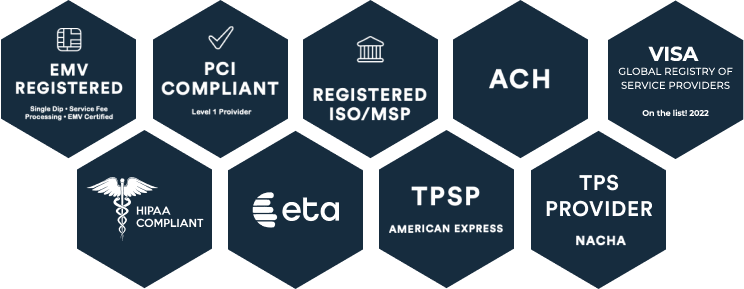Revenue reporting helps government institutions like yours track, identify, collect, and manage incoming payments for services provided. Its purpose is to help your team gain thorough understanding of your organization’s revenue and financial status.
But how does RCM provide valuable information to aid teams in making data-driven decisions?
The answer lies in revenue cycle management reports. CORE covers what you need to know about revenue reporting metrics to ensure you stay on the right track.
Table of contents:
- What Is Revenue Management Reporting?
- The 4 Metrics to Include in Your Revenue Management Report
- How Can You Determine Your Revenue Cycle Performance from Reports?
- Unlock the Power of Data with CORE
What Is Revenue Reporting?
Revenue management reporting is the process of tracking real-time data on incoming payments and reconciliation to gain a comprehensive report on:
- How your organization is performing financially for a given time
- What areas need to be adjusted/optimized for better performance and ROI
Overall, revenue cycle management reports help your team stay rooted in data—the centrifugal force that drives revenue cycle management.
It’s common to confront challenges in the revenue cycle management process. However, powerful tools and metrics exist to streamline the process. Automated revenue reporting helps your agency assess real-time analytics and performance to help:
- Predict your citizens’ payment behaviors
- Drive organizational success
The result? Smarter decisions, happier citizens, and maximized revenue.
The 4 Metrics to Include in Your Revenue Management Report
Revenue management reports track specific data points or metrics to assess your financial performance. From there, you can leverage relevant data to improve your agency’s revenue cycle performance. Below are the four key types of metrics to consider as you establish your agency’s revenue reporting process:
Keep in mind that these metrics:
- May need to be further adjusted to better align with your government sector
- Need to be paired with reliable reporting software to execute a successful revenue management cycle
1. Reconciliation
Reconciliation compares financial statements against your accounting books to ensure amounts are true, consistent, and up to date.
For smaller organizations (in size and budget), the number of constituents and finances may be smaller and pretty straightforward. For larger institutions, it can be more complex and challenging to track. This is where automated revenue reporting is extremely useful.
Keep in mind that manual reconciliation processes come at a cost: Organizations lose an average of $142,790 due to inefficient data reconciliation. However, a revenue management report can automatically track reconciliation. The goal is to help you quickly verify and auto-reconcile deposits and gain a comprehensive look at your transaction flow.
Example
For government institutions, reconciliation is important to help track fund balances, ensuring each fund is used appropriately. When multiple funds are involved, each with a different purpose (e.g., general fund and special funds), reconciliation ensures compliance with legal requirements. It provides documentation of the proper allocation of funds.
Transparent financial management builds public trust. By reconciling fund balances and documenting proper allocation, governments can provide clear and verifiable evidence of how taxpayer money is being utilized, fostering transparency and accountability.
2. Transaction and Tender Type
Tracking transaction and tender types can help your team:
- Assess which payment method is the most common among your citizens
- Identify ways to streamline and expedite the transaction process
- Ensure the correct convenience or service fees are added to the transaction type
Example
Government institutions often handle payments from multiple channels. You can segment and monitor certain transactions and tender types across various departments by tracking specific items. At CORE, our consolidated merchant reporting tool tracks and reports all tender types.
Do you know that the bill delivery method makes a difference for at least 60% of consumers? Tracking this data can identify ways to streamline and expedite your payment methods. It’s important on both ends to have instant access to citizen account balances and the immediate recording of payments they initiate. When Grand County, Utah, used CORE to execute digital payments amid tax season, they grew their online payments by 900%, totaling over $3 million in just one year.
3. Balance Settlement
When not efficiently tracked, balance settlements can deter your financial growth. Automated payment settlement tracking can notify your team of any outstanding balances that need to be addressed. The faster you can take appropriate action, the faster your revenue is maximized.
Example
For your constituents, there are numerous reasons for late or missed payments, including stress, a lack of reminders, or a shortage of cash. Your staff can set up payment plans or negotiations and track payment settlements to ensure your institution maintains a consistent revenue inflow.
CORE’s automated solutions also powerfully improve the payment experience for your constituents by boosting engagement with their account through real-time updates, flexible payment options, and convenient reminders.
4. Operating Cash Flow (OCF) Ratio
This metric evaluates an agency’s ability to meet short-term financial obligations using revenue generated from core operations.
In revenue reporting, measuring the operating cash flow ratio ensures that an institution can continue to provide essential services to the public without disruption. It also assists in resource allocation to ensure sufficient funding for day-to-day operations.
Example
For agencies responsible for public infrastructure, revenue and grants are essential to fund maintenance initiatives as well as new infrastructure projects. Armed with OCF ratio data, financial planners can confidently allocate funds for ongoing maintenance and repair projects but also plan for new projects without overextending the agency’s resources.
How Can You Analyze Performance from Revenue Cycle Management Reports?
Determining your revenue cycle performance from reports involves analyzing the four key financial metrics above to assess the efficiency of your organization’s revenue generation and collection process. The right automated solution assesses any issues that arise from each metric but can also evaluate the time it takes to achieve your organizational goals.
Solutions such as CORE’s payment and engagement platform enhance the reliability and validity of revenue reporting, which can help your team:
- Assess the financial health of your organization.
- Make the appropriate adjustments.
At their core, revenue cycle management reports combine administrative and your institution’s data to ensure each constituent is taken care of and your facility maintains a healthy revenue cycle.
Unlock the Power of Revenue Reporting with CORE
Closely monitoring your revenue cycle is essential for the financial well-being of your government institution. With automated revenue reporting capabilities, comprehensive analysis of financial and operational metrics is possible, helping you optimize your revenue cycle management processes.
Meet all your reporting requirements with real-time insights when you partner with CORE. Our report generator software allows you to select from multiple reporting templates and configure them based on required metrics. You and your constituents deserve a simple, easy, and convenient payment experience. Contact the CORE team to learn how you can get started with automated payment solutions today.






